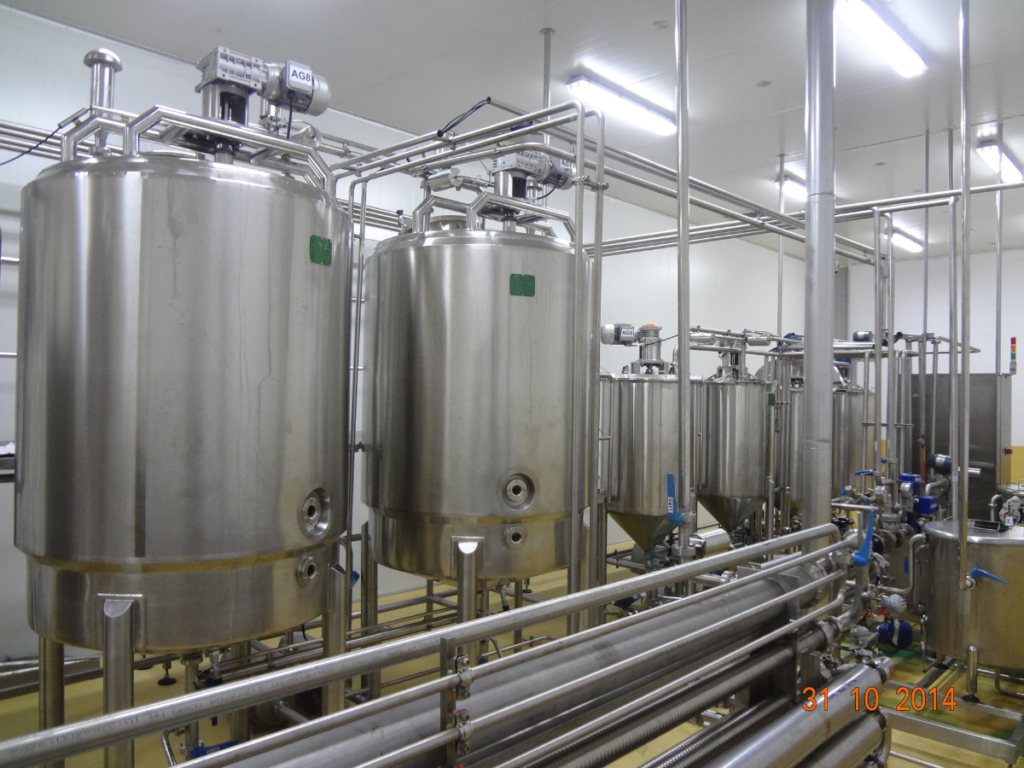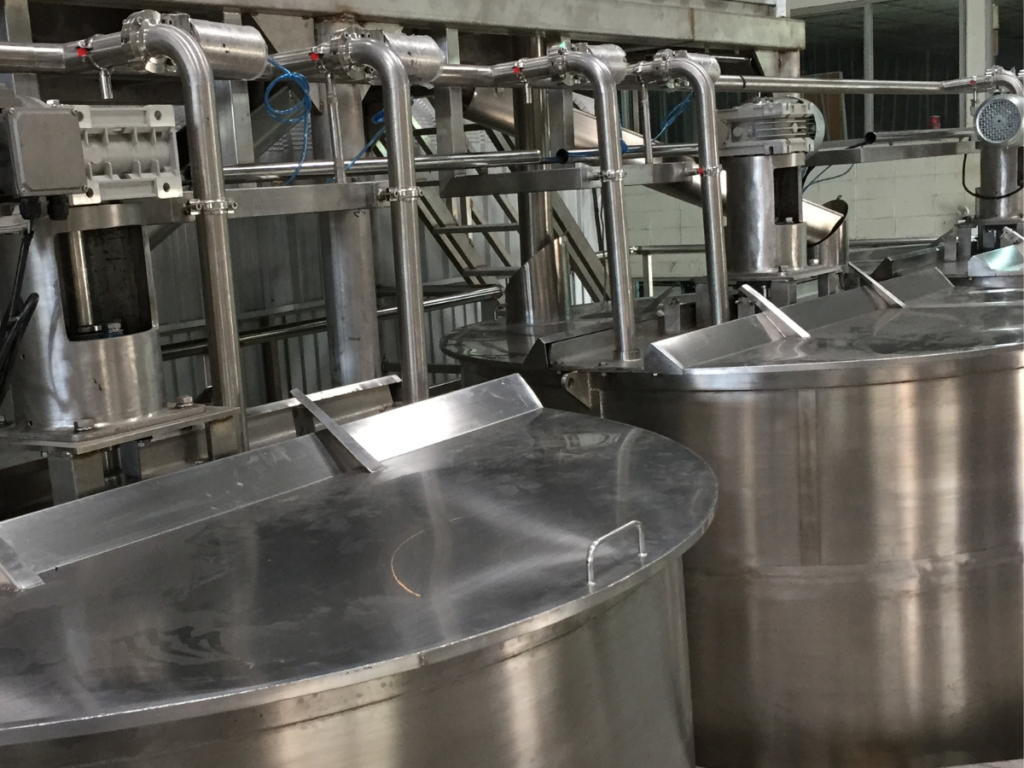
What is a Mixing Tank for Beverages?
Mixing tanks are large vessels specifically designed to blend different ingredients in the production process. These tanks can vary in shape, and size- depending on the specific requirements of the manufacturing company and the type of final products desired. In beverage production lines, mixing tanks are usually utilized to mix ingredients such as water, flavorings, sugar, and other additives (1) .
Material used in making a mixing tank can range from all types of steel to hard rubber, glass, or plastic- again depending on the specific needs of the business and the nature of the final product. More often than not, stainless steel is used in making mixing tanks as they are easy to clean up and have a smooth surface. Sometimes, Copper is also used to make mixing tanks, however, as copper has the tendency to have hostile reactions towards certain chemicals, it is only used moderately.
Mixing tanks typically have plumbing lines installed to and from them as they are relegated to liquid mixing. Liquid ingredients are directly delivered into the tank by the pipelines. After the liquids and ingredients are mixed to a proper level of consistency, the mixture is sent to the next process via the plumbing lines attached to the bottom of the tanks.
Many of these mixing tanks are self-cleaning by inserting fresh water into the tanks through a permanently secured pipe. These plumbing and pipelines are usually vacuum-operated by a remote motor or control system located in a central position to all mixing tanks (2).
Why is it worth using beverage mixing tanks?
There are several benefits that can mixing tanks offer to beverage manufacturers. The first benefit would be that these vessels provide a consistent and efficient mixing process by ensuring that each beverage batch has a consistent flavor and is of high quality. Due to this benefit, beverage manufacturers that produce in large quantities can ensure that every bottle or can of their beverage would have the same flavor and quality as the last.
Mixing tanks can also help manufacturers to save money and time in the long run. By using the automated features of the mixing tanks in the process lines, businesses can reduce the amount of human power required, which can help save a significant amount of cost. Stainless steel mixing tanks can also help save maintenance costs due to their durability and can reduce the contamination risk which is necessary for a hygienic manufacturing process.
Mixing tanks can also bring benefits to the chemical production industry as well. Since many chemicals cannot be stored together due to their nature when mixed, chemicals need to be stored in separate containers. Combining these chemicals in a mixing tank when they are ready to be used can enable manufacturers to buy a huge quantity of chemical ingredients without having to worry about dangerous chemical reactions. This ensures a safer working environment for the employees as well as cost savings and better supply chain plans for the business owners (2).

Why Stainless Steel Mixing Tanks?
Stainless steel is one of the ideal choices by many manufacturers when it comes to selecting the right mixing tank for beverage process lines. This is due to the following advantages that stainless steel have over other materials such as:
Sturdiness : Stainless steel has exceptional longevity and sturdiness compared to other materials such as glass, rubber or plastic. Stainless steel can withstand the rigors resulting from daily usage in a beverage process line and the material is also resistant to rust, and corrosion as the name itself suggests. Due to the material’s resilience, manufacturers can ensure their tanks’ longevity for years.
Versatility : Stainless steel can be utilized to create mixing tanks for a wide variety of production processes- from the beverage industry to chemical production. Stainless steel mixing tanks can also be used to mix, blend, and store the products according to their size, shape, and features which can be customized according to the customers’ needs.
Cost-Effectiveness : One might be doubtful about the cost-effectiveness of the stainless steel mixing tanks as the upfront cost of using stainless steel can be higher than using other materials like plastics. However, due to their sturdiness, stainless steel require less maintenance than other material and can offer significant cost savings in the long-run. Stainless steel tanks also last longer than other types of mixing tanks and hence, companies do not need to replace or repair them frequently.
Hygiene : As stainless steel is a non-porous material, mixing tanks made from it are easy to clean and maintain. This is ideal for food and beverage process lines which require constant contact with liquids. Another benefit of stainless steel is that they are resistant to bacteria and other harmful pathogens, reducing contamination risks which is important in food and beverage productions.
How to find the best mixing tanks?
To find the best mixing tank for your process line, the first step would be to determine the specific needs of your business, such as the volume capacity of the production and the type of beverage desired. Then, consider the material for the tank to be made of, as different materials as their own advantages and disadvantages. As hygiene and quality are important factors in the food and beverage process lines, checking for the necessary accreditations such as ISO, FDA, and NSF might also be necessary to ensure that the required standards are met.
MUNINMAX can offer you with Mixing Tanks that check all the mentioned boxes and more. Watch the video below to find out how our 5000L mixing tanks are designed inside.
For any size and design required by your business, send us an email via [email protected] and we can deliver you the customized solutions that fit your business needs like a glove!
